Marcin Mucha
An Improved Algorithm For Online Reranking
Sep 11, 2022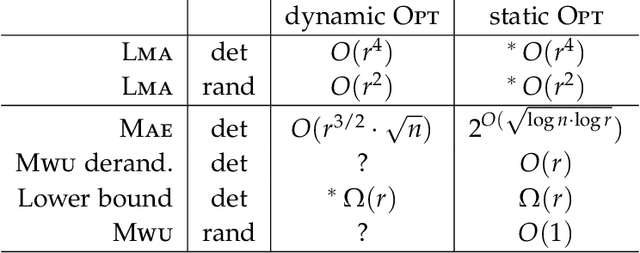
Abstract:We study a fundamental model of online preference aggregation, where an algorithm maintains an ordered list of $n$ elements. An input is a stream of preferred sets $R_1, R_2, \dots, R_t, \dots$. Upon seeing $R_t$ and without knowledge of any future sets, an algorithm has to rerank elements (change the list ordering), so that at least one element of $R_t$ is found near the list front. The incurred cost is a sum of the list update costs (the number of swaps of neighboring list elements) and access costs (position of the first element of $R_t$ on the list). This scenario occurs naturally in applications such as ordering items in an online shop using aggregated preferences of shop customers. The theoretical underpinning of this problem is known as Min-Sum Set Cover. Unlike previous work (Fotakis et al., ICALP 2020, NIPS 2020) that mostly studied the performance of an online algorithm ALG against the static optimal solution (a single optimal list ordering), in this paper, we study an arguably harder variant where the benchmark is the provably stronger optimal dynamic solution OPT (that may also modify the list ordering). In terms of an online shop, this means that the aggregated preferences of its user base evolve with time. We construct a computationally efficient randomized algorithm whose competitive ratio (ALG-to-OPT cost ratio) is $O(r^2)$ and prove the existence of a deterministic $O(r^4)$-competitive algorithm. Here, $r$ is the maximum cardinality of sets $R_t$. This is the first algorithm whose ratio does not depend on $n$: the previously best algorithm for this problem was $O(r^{3/2} \cdot \sqrt{n})$-competitive and $\Omega(r)$ is a lower bound on the performance of any deterministic online algorithm.
Improving Ads-Profitability Using Traffic-Fingerprints
May 31, 2022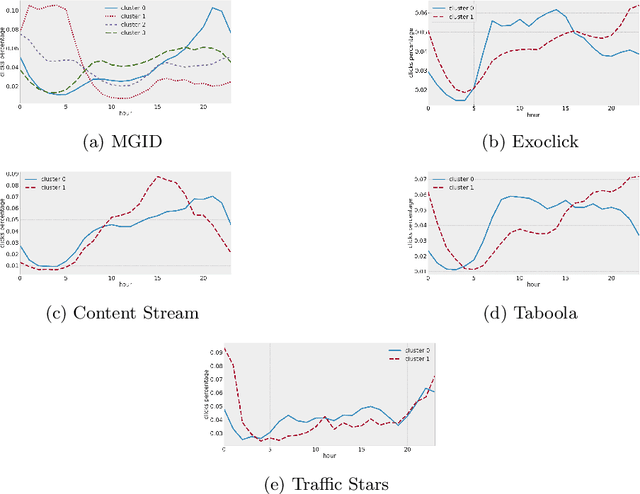
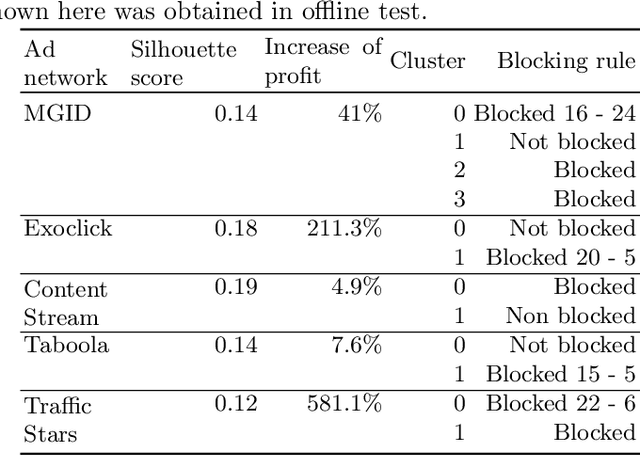
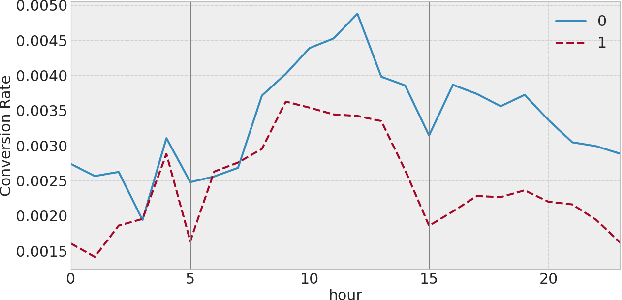
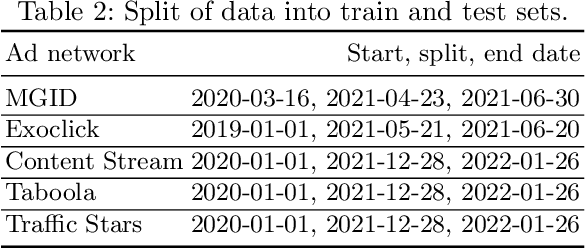
Abstract:This paper introduces the concept of traffic-fingerprints, i.e., normalized 24-dimensional vectors representing a distribution of daily traffic on a web page. Using k-means clustering we show that similarity of traffic-fingerprints is related to the similarity of profitability time patterns for ads shown on these pages. In other words, these fingerprints are correlated with the conversions rates, thus allowing us to argue about conversion rates on pages with negligible traffic. By blocking or unblocking whole clusters of pages we were able to increase the revenue of online campaigns by more than 50%.
 Add to Chrome
Add to Chrome Add to Firefox
Add to Firefox Add to Edge
Add to Edge